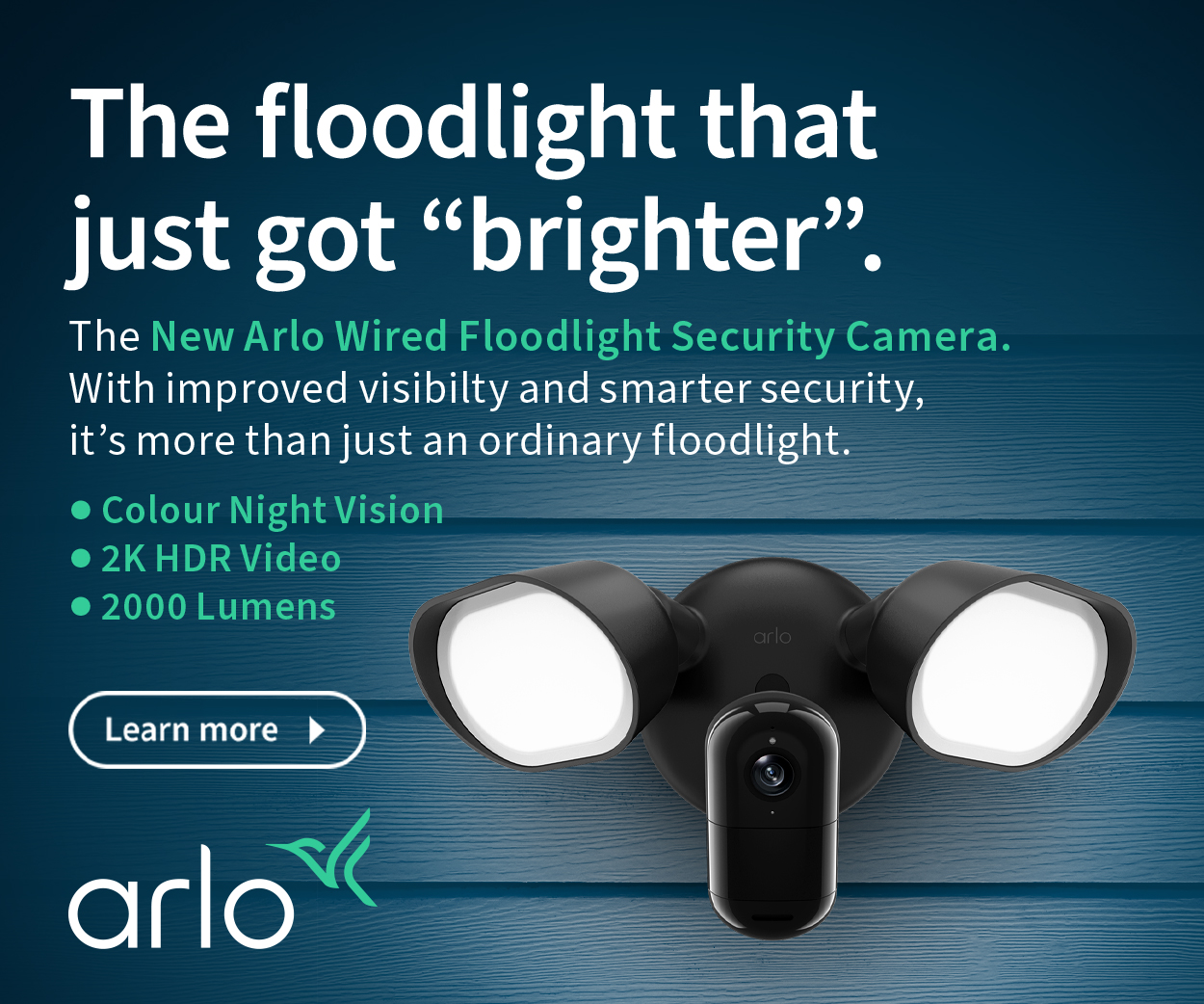Motorola Edge 50 Fusion – the best value smartphone with Edge benefits (review)

The Motorola Edge 50 Fusion is its entry-level Edge (referring to the curved screen Edge range) and, at $599, is a compelling option for those who want quality on a budget.
In fact, the next Edge is the $999 Motorola Edge 50 Pro – an excellent upper-mid-range smartphone, and then the $1699 Razr 50 Ultra flip (review coming). If money is tight, then the $449 Moto g84 5G – how does Motorola do it? is a great phone too.
The key points include
- 6.7”, 2400x 1080, SDR, 10-bit/1.07M colour, 144Hz pOLED screen
- Qualcomm SD7S Gen 2 SoC
- 12/1256GB RAM/Storage
- Excellent city, suburbs and regional use phone antenna strength
- Class-leading dual-camera
- Decent all-day battery life and a 68W charger
- IP 68 water resistance
- 2-year warranty, 3 OS upgrades, and 4 years of security patches
Frankly, this phone has way more value than its price reflects.
Warning – do not buy grey market
Only Motorola-approved resellers (Harvey Norman, JB Hi-Fi, Telstra, Officeworks) sell the Australian-certified version for Telco networks, which comes with an Australian warranty.
Do not buy the version with a Qualcomm SD6 gen 1 or 8/128GB RAM/Storage.
Read Don’t buy a grey market smartphone.
New review format
We are experimenting with our review format. Where we used to put all the raw data in tables at the end, we will now break them up and briefly comment on the various parts. Why? Readers who want to know more will paw over the tables. Readers who wish to see if it’s a good phone can just read the comments. Of course, we still have CyberShack’s’ View and rating explanation at the end – do make sure you read that.
We use Fail (below expectations), Pass (meets expectations) and Exceed (surpasses expectations or is the class leader) against many of the items below. We occasionally give a Pass(able) rating that is not as good as it should be and a Pass ‘+’ rating to show it is good but does not quite make it to Exceed. You can click on most images for an enlargement.
We are also tightening up on grading. From now on, Pass, for example, means meeting expectations for the price bracket. We consider a Pass mark to be 70+/100 with extra points added for class-leading and excellence.
Australian Review: Motorola Edge 50 Fusion, 12/256GB, SIM+eSIM, model XT2429-2
| Brand | Motorola |
| Model | Motorola Edge 50 Fusion |
| Model Number | XT2429-2 |
| RAM/Storage Base | 12/256GB |
| Price base | $599 |
| Warranty months | 24-months ACL |
| Tier | Mid-range with Edge benefits |
| Website | Product Page |
| From | Motorola online, Harvey Norman, Domayne, JB Hi-Fi, Bing Lee, Officeworks. |
| Made in | China |
| Company | It is owned by Lenovo (Est 1984) – a multinational technology company with its primary operational headquarters in Beijing and Morrisville, North Carolina. It is the world’s largest PC maker. It purchased Motorola Mobility from Google in 2014. Most of Lenovo’s smartphone business is now under the Motorola brand, with grand plans to become a ‘top five’ smartphone maker. |
| More | CyberShack Motorola news and reviews CyberShack Smartphone news and reviews |
| Test date | 1-18 July 2024 |
| Ambient temp | 8-17° |
| Release | Global release May 2024 |
| Other models not for Australia (Don’t buy) | Motorola makes models for various markets that are not for Australian Telco networks nor carry an Australian warranty. Do not buy SD 6 Gen 1 or 8/128GB versions. |
Screen – Pass+
It is a colourful, bright, colour-accurate, daylight-readable, 10-bit/1.07million colour, 144Hz, pOLED screen. It would have been Exceed except that it is only for SRD (standard dynamic range content) and does not have Dolby Vision or HDR/10 metadata decoder.
For this price bracket, it is extraordinary value.
| Size | 6.7″ |
| Type | pOLED |
| Flat, Curve, 2D, 3D | Borderless, Curved edges with centre o-hole |
| Resolution | 2400 x 1080 |
| PPI | 394 |
| Ratio | 20:9 |
| Screen to Body % | 92% |
| Colours bits | 10-bit 1.07 billion colours |
| Refresh Hz, adaptive | Fixed 60, 120, 144Hz or stepped 60/120/144Hz |
| Response 120Hz | Touch rate 360Hz gaming mode |
| Nits typical, test | Claim 500 (tests 515) |
| Nits max, test | Peak 1600 (Test 1250/1455 100/2% window) |
| Contrast | Infinite |
| sRGB | Claim 100% (98.9%) |
| DCI-P3 | Claim 100% (Test 74%). This is lower than expected but better than 100% of 16.7 billion colours. I suspect that this is a firmware-fixable natural mode preset issue. |
| Rec.2020 or other | N/A |
| Delta E (<4 is excellent) | 1.4 – excellent colour accuracy |
| HDR Level | SDR |
| SDR Upscale | No |
| Blue Light Control | Yes |
| PWM if known | Approx 400Hz. It is imperceptible at about 70% brightness, so it should not affect PWM-sensitive people. There is a DC dimming switch for lower brightness levels. |
| Daylight readable | Yes |
| Always on Display | Yes – tap to wake |
| Edge display | Edge Lights alert you to calls and notifications when the screen faces down. |
| Accessibility | All Android 14 features |
| DRM | L1 for FHD SDR playback. |
| Gaming | <1m GTG Up to 360Hz touch Snapdragon Elite Gaming features include: Variable Rate Shading for faster graphics performance. Qualcomm Game Quick Touch increases display responsiveness. Updatable drivers deliver the latest graphics and performance improvements in real-time. However, most games will not get past 60fps on medium-quality settings. |
| Screen protection | Gorilla Glass 5 |
| Comment | Excellent 10-bit, 1.07 billion-colour screen with far greater subtleties in colour than the 8-bit Samsung S24/+/Ultra. Despite the screen’s more than enough brightness, it does not decode metadata for HDR/HDR10/DA. |
Processor (SoC) – Pass+
This uses a new ‘S’ version of the Qualcomm Snapdragon, which you will see in at least the SD7 and SD8 series. The main difference is that there are eight cores, excluding the ‘power’ core in non-S SoCs. This is a totally unfair comparison to the SD7+ Gen 3 here.
Think of it as a four-cylinder naturally aspirated engine versus a turbo.
| Brand, Model | Qualcomm SD7S Gen 2 If you haven’t heard of the ‘S’ range, it is a scaled-down version lacking AI and some full-version features. |
| nm | 4nm made on Samsung 4LPE fab plant |
| Cores | 4 x 2.40GHz & 4 x 1.95GHz |
| Modem | X62 (Sub-6GHz) |
| AI TOPS OR Multi-thread Integer Operations Per Second (INOPS) GINOPS = billion | We understand that it is well below 10 TOPS 14.62 GFLOPS 15.51 GINOPS |
| Geekbench 6 Single-core | 1017 |
| Geekbench 6 multi-core | 2918 |
| Like | Like Exynos 1380, MediaTek 7030/7050 or SD7 Gen 1 Benchmarks |
| GPU | Adreno 710/580Ghz |
| GPU Test | |
| Open CL | 1806 |
| Vulcan | 2308 |
| RAM, type | 12GB LPDDR45X (plus virtual RAM Boost). |
| Storage, free, type | 256GB UFS 2.2 (213GB free) |
| micro-SD | No |
| CPDT internal seq. Read MBps sustained | 804 Jazz max 923 |
| CPDT internal seq. write MBps sustained | 478 Jazz maximum 504 |
| CPDT microSD read, write MBps | N/A |
| CPDT external (mountable?) MBps | 20/11.7Mbps mountable |
| Comment | Slowish UFS 2.2 internal storage and even slower USB-C 2.0 external storage. Excellent for the price. |
Throttle test – Pass+
It keeps pretty cool and loses negligible power over a 15-minute throttle test.
| Throttle test | |
| Max GIPS | 243307 |
| Average GIPS | 227768 |
| Minimum GIPS | 200.145 |
| % Throttle | 12% |
| CPU Temp | 50° |
| Comment | Excellent thermal management and rock-solid performance. Gamers will appreciate this. |

Comms – Pass
Our only comment is that it uses Wi-Fi 5 AC 2.4/5GHz, but the SoC supports Wi-Fi 6E. At the price, you cannot expect Wi-Fi 6 or 6E. Wi-Fi signals are pretty strong at 10m.
| Wi-Fi Type, model | Wi-Fi 5 AC 2.4/5GHz |
| Test 2m -dBm, Rx/Tx Mbps | -37/876/876 |
| Test 5m | -47/794/876 |
| Test 10m | -53/650/809 |
| BT Type | 5.2 |
| GPS single, dual | Dual 3m accuracy |
| USB type | USB-C 2.0 480Mbps – no display port audio/video data stream support |
| ALT DP, DeX, Ready For | Only over Miracast |
| NFC | Yes |
| Ultra-wideband | No |
| Sensors | |
| Accelerometer | Yes combo |
| Gyro | Yes combo |
| e-Compass | Yes |
| Barometer | |
| Gravity | |
| Pedometer | |
| Ambient light | Yes |
| Hall sensor | |
| Proximity | Yes |
| Other | SAR sensor |
| Comment | It is a shame to use Wi-Fi 5 AC 2.4/5GHz when the SoC supports up to Wi-Fi 6E – but this is a value device. It reaches 876Mbps (maximum). |
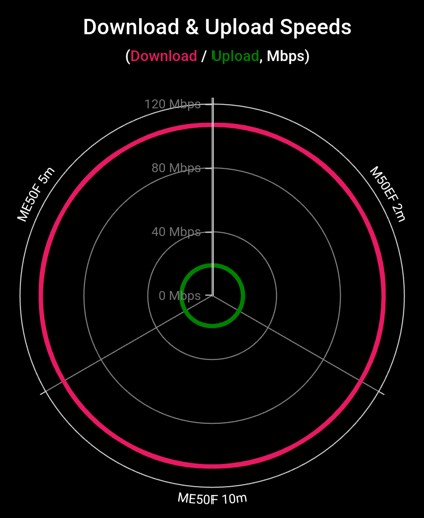
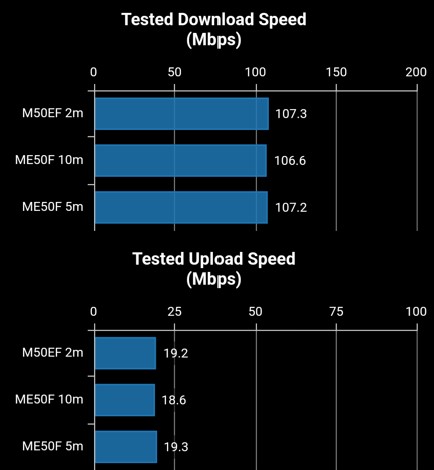
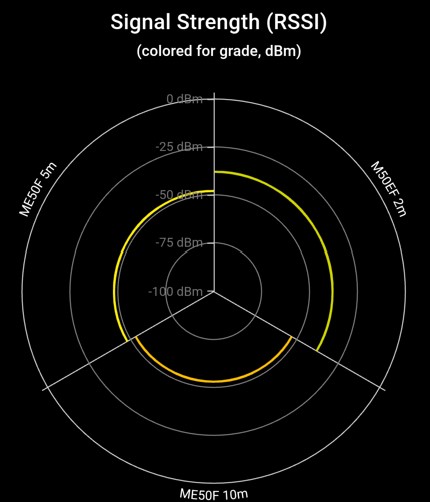
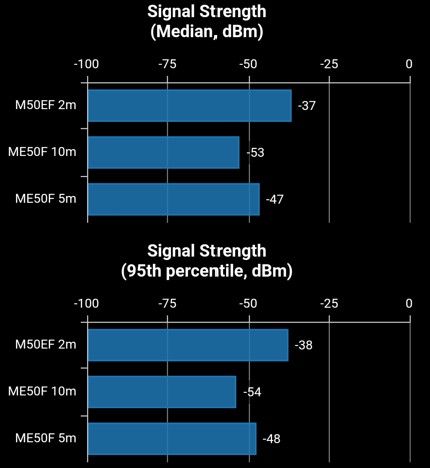
Notice that the 5 and 10m distances below had quite a variation in Rx and Tx speed, where it was rock solid at 2m. It is not an issue in typical use.
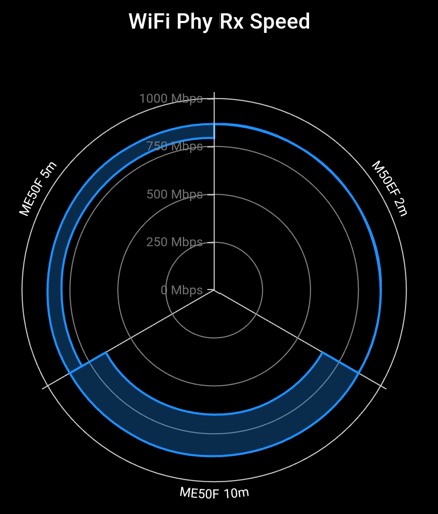
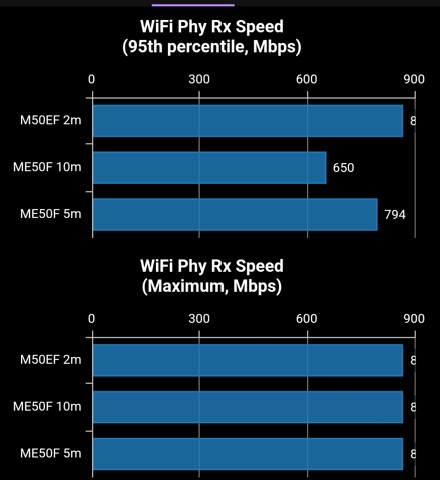

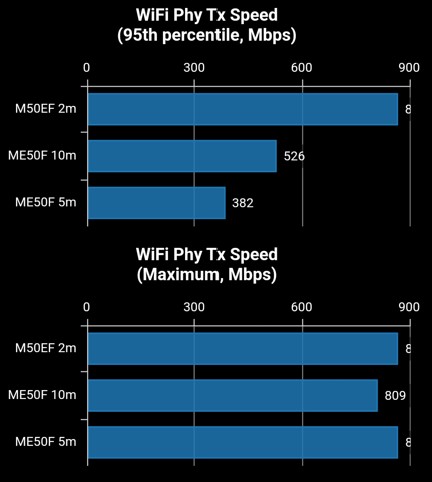
4/5G – Pass+
Three things stand out. It has a single SIM, an eSIM, and dual ring tones.
The antenna strength is highly suitable for city, suburb, and regional use. It may be fine for rural use, but we are not sure.
| SIM | Single Sim and eSIM |
| Active | DSDS – Both are active but can only use one at a time. |
| Ring tone single, dual | Dual ring tones – excellent |
| VoLTE | Carrier dependent |
| Wi-Fi calling | Carrier dependent |
| 4G Bands | 1/2/3/5/7/8/18/19/20/26/28/32/38/40/41/42/71 |
| Comment | All Australian and most world bands |
| 5G sub-6Ghz | n1/3/5/7/8/20/26/28/38/40/41/77/78 |
| Comment | All Australian 5G sub-6 and low bands |
| mmWave | No |
| Test Boost Mobile, Telstra | |
| DL/UL, ms | 35/10/35m2 – average |
| Tower 1 -dBm, fW or pW | from -75 to -82 and 6.3 to 31.6pW – exceptional first tower strength |
| Tower 2 | from -78 to -95 and 316.2fW to 15.8pW |
| Tower 3 | from -81 to -89 and 1.3pW to 7.9pW |
| Tower 4 | Did not find |
| Comment | These are excellent signal strengths and should be good for cities, suburbs, and major regional towns. Rural areas with some Band 28 signal are probably OK. |
Battery – Pass+
It has a 5000mAh battery and a 68W charger for 52 minutes charge time.
Motorola calls this a 30-hour battery, but it is under particular test circumstances. We expect typical users will change once a day, and power users may need a top-up later in the day.
| mAh | 5000mAh 4.344V/4.87A/21.15W |
| Charger | 68W 5V/3A/15W, 9V/3A/27W, 15V/3A/45W, 20V/3.4/68W OR 11V/6.2A/68.2W Enable Boost Charge in the Battery setting. |
| PD, QC level | PD 3 and QC 5 |
| Qi, wattage | No |
| Reverse Qi or cable. | No |
| Test (60Hz or adaptive screen) | Adaptive |
| Charge % 30mins | Advertised: 15 minutes for a day’s use |
| Charge 0-100% | 68W and can fill in 52 minutes. It never went over 9V/3A/27W. With other chargers and 5W cables – 9V/4.A/36W. |
| Charge Qi | N/A |
| Charge 5V, 2A | Over 5 hours |
| Video loop 50%, aeroplane | 24 hours and 30 minutes |
| PC Mark 3 battery | 14 hours 31 minutes Accubattery: 14 hours 49 minutes |
| GFX Bench Manhattan battery | Did not run |
| GFX Bench T-Rex | 311.1 minutes (5.19 hours) 5863 frames |
| Drain 100-0% full load screen on | 3 hours 33 minutes Accubattery: 4 hours 57 minutes |
| mA Full load screen on | 1400-1500mA – higher than expected |
| mA Watt idle Screen on | 200-250mA |
| Estimate loss at max refresh | Tested on Adaptive screen and balanced power. |
| Estimate typical use | Motorola advertises over 30 hours. All battery life claims are approximate and based on the median user tested across a mixed-use profile. |
| Comment | The video loop time is very good but is the least draining of the tests. PC Mark 3 and Accubattery replicate typical use and show just over 14 hours. Under load, 4 hours is what you could expect as a gamer or heavy user. You will have to recharge daily for 12-15 hours of use. |
Sound hardware – Pass
It would have scored a Pass+ but for a definite bias to the bottom speaker. It has a full suite of Qualcomm codecs, LDAC, and other new codecs.
| Sound | DA Smart Audio and Spatial Sound enabled |
| Speakers | Top forward, up-firing and bottom down-firing stereo. |
| Tuning | N/A |
| AMP | 2 x FS16xx amps (specifications unknown) FSA4480 Digital to Analogue USB DAC |
| Dolby Atmos decode | Yes, to 2.0, but it is really more effective with headphones. |
| Hi-Res | 24-bit/48000Hz |
| 3.5mm | No |
| BT Codecs | SBC, AAC, aptX, aptX HD, aptX TWS, aptX Adaptive, LDAC, LHDCV2/3/5 |
| Multipoint | Yes |
| Dolby Atmos (DA) | Decode to 2.0 speakers and earphones |
| EQ | New DA EQ includes Spatial Audio. The remainder are 2.0 only – Smart Audio, Music, Movie, Game, Podcast and Custom. |
| Mics | 2 – one for noise cancelling and use with CrystalTalk AI NR. |
| Test dB – all on EQ flat DA off | |
| Volume max | 83 |
| Media (music) | 81.5 |
| Ring | 83.5 |
| Alarm | 83.7 |
| Notifications | 80 |
| Earpiece | 60.4 |
| Hands-free | Decent noise reduction and volume levels were quite good and clear. |
| BT headphones | Excellent left-right separation and DA makes quite a difference with DA content. |
Sound quality – Pass
It has no mid-bass, slow-building mid and almost no treble. Perfect for clear voice but not music.
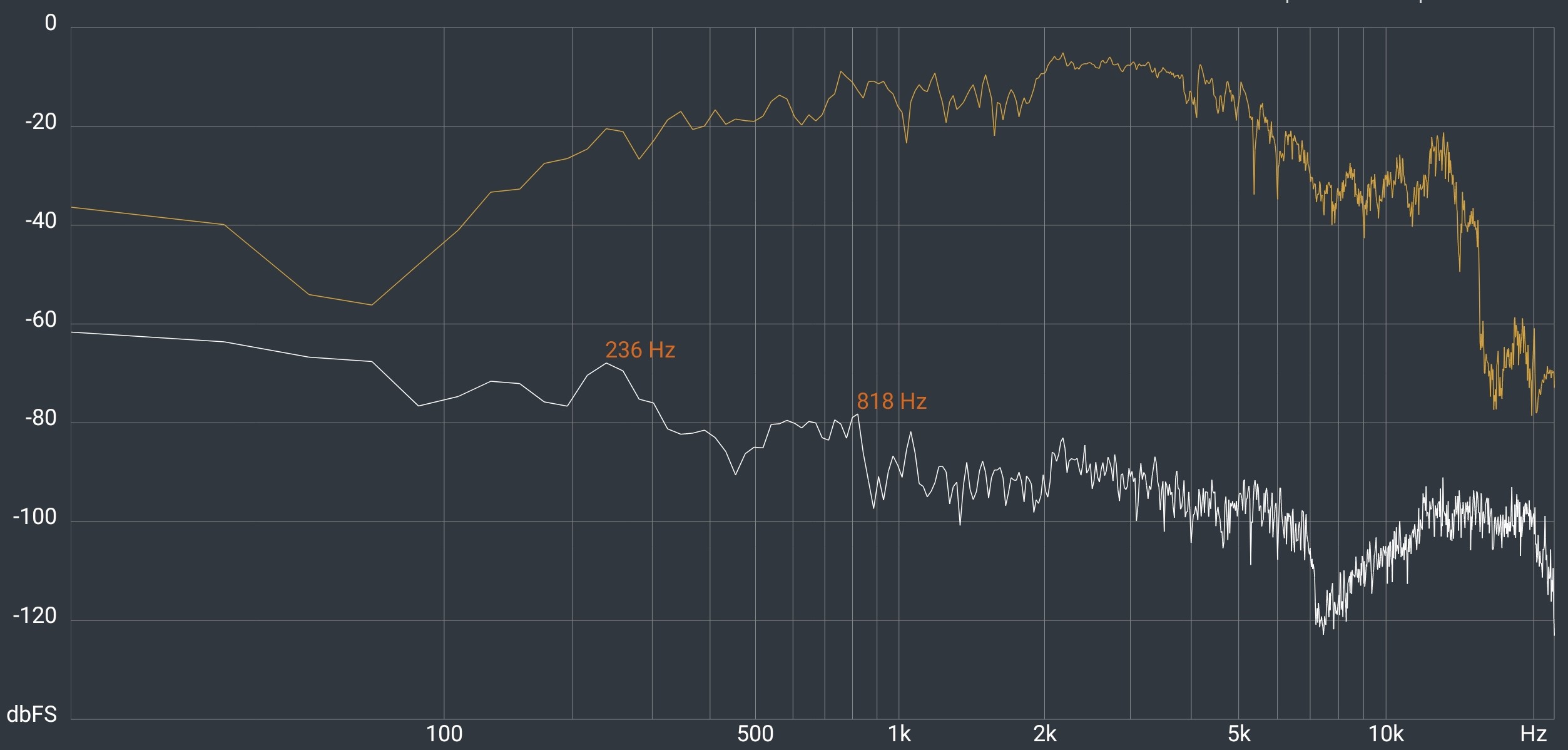
When used with Dolby Atmos content, the EQ adds some 3D height and width.
| Deep Bass 20-40Hz | Nil |
| Middle Bass 40-100Hz | Starting at 90Hz and building linearly to 500Hz |
| High Bass 100-200Hz | Building |
| Low-Mid-200-400Hz | Building |
| Mid 400-1000Hz | Flattening |
| High-Mid 1-2kHz | Flat |
| Low Treble 2-4kHz | Flat |
| Mid Treble 4-6kHz | Flat |
| High Treble 6-10kHz | Lineal decline to 15kHz |
| Dog Whistle 10-20kHz | Off the cliff |
| Sound Signature type | This is a mid-signature (bass recessed, mid-boosted, treble recessed) for clear voice. It is not easy listening as it lacks bass (low notes are muddy or absent), and the high treble is choppy and harsh. |
| Soundstage | Definite bias to the bottom impairs left/right separation. DA sound stage is quite wide and has some 3D height. |
| Comment | The sound signature is average, but it helped with a little high bass. Use headphones |
Build – Pass+
The Edge series has a curved screen, almost no bezel, and a thin profile. It feels great in hand, and the vegan leather finish is grippy. With its OS and Patch policy, this is a keeper.
| Size (H X W X D) | 161.9 x 73.1 x 7.9mm |
| Weight grams | 174.9 |
| Front glass | Curved Gorilla Glass 5 3D glass with anti-fingerprint coating |
| Rear material | PMMA or vegan leather |
| Frame | Plastic metallic appearance and colour-matched |
| IP rating | 68 – Liquid damage not covered under warranty 30 minutes at 1.5m |
| Colours | Forest Blue (PMMA) Hot Pink (Vegan Suede) Marshmallow Blue (Vegan leather) |
| Pen, Stylus support | No |
| In the box | |
| Charger | 68W |
| USB cable | USB-A to USB-C 3W cable |
| Buds | No |
| Bumper cover | Yes |
| Comment | Has charger inbox – excellent |

OS – Pass+
It is rare for a $599 device to have a 2+3+4 (Warranty, OS upgrade, and patch policy).
| Android | Android 14 |
| Security patch date | 1 May 2024 |
| UI | Now Hello UX. |
| OS upgrade policy | 3 |
| Security patch policy | Quarterly for four years |
| Bloatware | Pure Android – all Google Apps. You can uninstall Facebook. |
| Other | Google Photos is now the default. This means AI tools such as Magic Editor (10 free uses per month), Magic Eraser, Photo Unblur and more. |
| Comment | My UX seems to have gone but the functionality lives on. Moto Apps now manages most Moto features and enables simple updates. Family Space, Games, Moto Connect, Moto Secure, Moto Unplugged, Moto Ready For. Display: Peek Display, Attentive Display Gestures: Quick capture, Fast flashlight, Three-finger screenshot, Lift to unlock, Flip for DND, Pick up to silence, Swipe to split |
| Security | |
| Fingerprint sensor location, type | Optical under glass |
| Face ID | Yes, 2D only |
| Other | Lenovo ThinkShield is more for enterprise use. |
| Comment | Moto Secure – Manage network security, control app permissions, and even create a secret folder for your most sensitive data. Website |
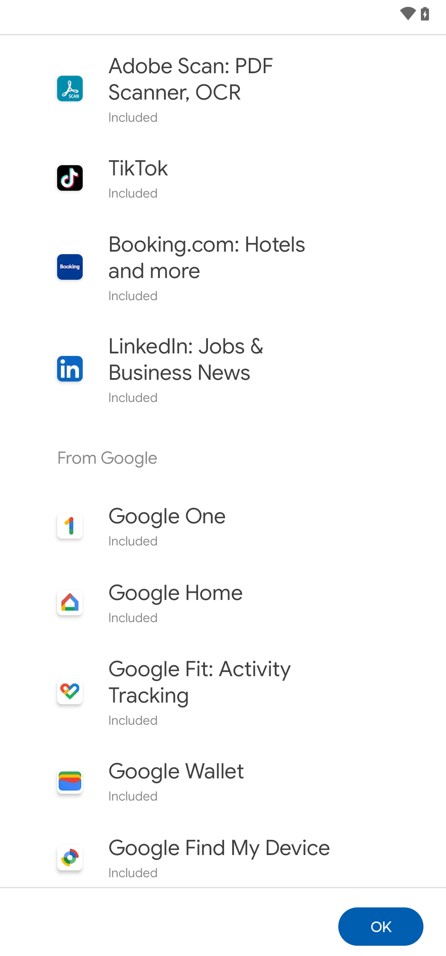
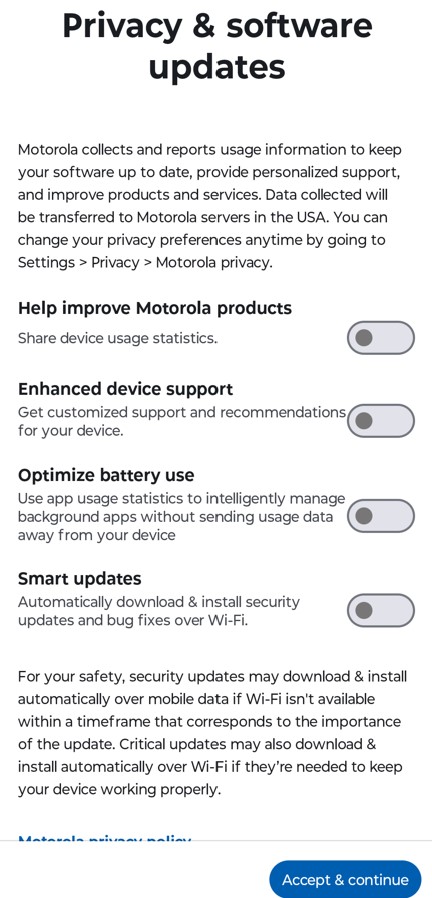
Motorola Edge 50 Fusion rear camera – Pass+
Before you get excited about the Sony LYTIA sensor, remember it is just a new marketing name that will replace the IMX model numbers. It does not imbue it with special powers! However, Motorola was the first to use this sensor, and the results were pretty good. It takes class-leading day, office, and night light shots.
It is a dual sensor: Wide 50 (binned to 12.6MP) +13MP Ultra-wide and macro. Most of your work will be done with the wide sensor. The 13MP has Autofocus and makes macro shots easy.
Interestingly, the camera app is a Motorola one, but it still uses Google Photos as the repository. The app works, but it is laggy and needs refinement.
It has a choice of Natural colours (as per the screen preview) or Enhance for higher colour saturation.
We do not extensively test video, which has a maximum of 4K@30fps. As per most smartphones, 1080p@30fps gives you OIS and EIS for very good video.
We will let the test photos tell the story.





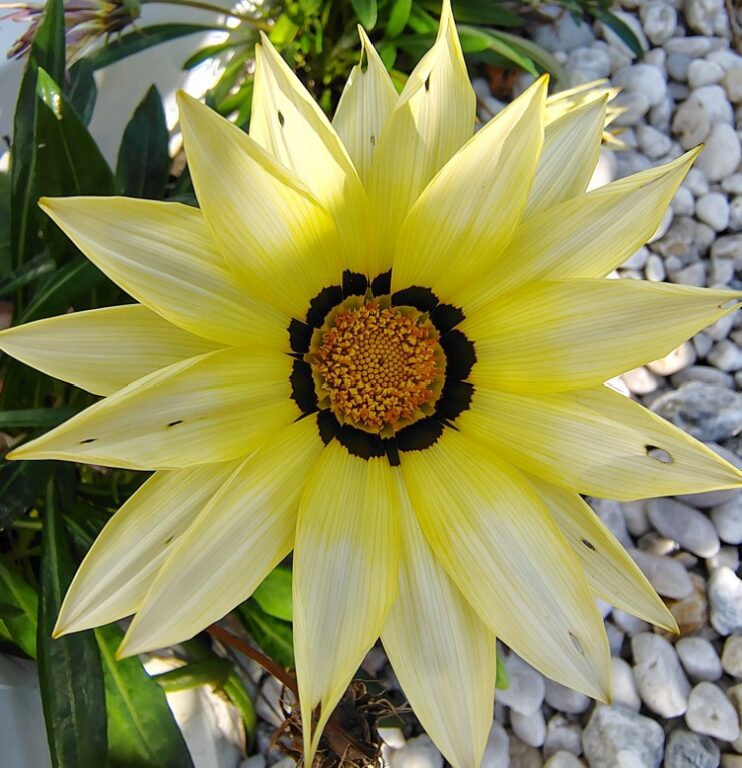





| Rear Primary | Primary |
| MP | 50MP bins to 12.6MP |
| Sensor | Sony IMX896 (no database entry). It may be under Sony LYTIA LYT-700C. 1/1.5″ |
| Focus | All pixel focus |
| f-stop | 1.8 |
| um | 1 bins to 2 |
| FOV° (stated, actual) | 73 to 85.5 |
| Stabilisation | OIS (and Qualcomm EIS) |
| Zoom | 10X with a 4.2X crop factor |
| Rear 2 | Ultra-wide and Macro |
| MP | 13MP |
| Sensor | Hynix HI1336 |
| Focus | AF/Fixed Macro from 3-5cm |
| f-stop | 2.2 |
| um | 1.12 |
| FOV (stated, actual) | 120 |
| Stabilisation | No |
| Zoom | No |
| Special | Artificial intelligence: Google Photos Auto Enhance Auto Smile Capture Gesture Capture Google Lens™ integration Shot Optimisation |
| Video max | 4K@30fps |
| Flash | Single |
| Auto-HDR | Yes |
| Shooting modes: Portrait (24mm/35mm/50mmm), Macro Dual Capture Ultra-Res Night Vision Tilt-Shift Pro Scan Spot Colour Panorama Super Resolution Zoom Burst Shot Timer Assistive Grid Leveller Metering Mode Watermark Live Filters Selfie Stick Support RAW Photo Output QR/Barcode Scanner | |
| QR code reader | Via Google Lens |
| Night mode | AI |
Motorola Edge 50 Fusion Selfie
| Front | Selfie |
| MP | 32MP bins to 8.1MP |
| Sensor | Samsung S5KJD1 |
| Focus | Fixed |
| f-stop | 2.4 |
| um | .7 bins to 1.4 |
| FOV (stated, actual) | 70 to 82.4° |
| Stabilisation | EIS |
| Flash | Screen fill |
| Zoom | No – crop factor 7.5 |
| Video max | 4K@30fps |
| Features | Shooting modes: Dual Capture Timelapse (w/ Hyperlapse) Spot Colour Other features: Video Stabilisation Video Snapshot Selfie Video Mirror Selfie Stick Support External Microphone Support Face Retouch Shooting modes: Dual Capture Timelapse (w/ Hyperlapse) Spot Colour Other features: Video Stabilisation Video Snapshot Selfie Video Mirror Selfie Stick Support External Microphone Support Face Retouch |
| Comment | Excellent skin tones. |
CyberShack’s view – The Motorola Edge 50 Fusion is the <$600 class leader
It punches well above its weight, and we are hard-pressed to find a Qualcomm SoC, 12GB/256GB, excellent phone reception, IP68, etc., even for $200 more.
It is a lovely-looking phone, well made, with a premium finish. It has a terrific warranty/OS/security policy and is generally great.
We can see where dollars have been shaved – the S-series processor, SDR screen, Wi-Fi 5, LPDDR4 RAM, UFS 2.2 storage, etc., but at $599, no one will care.
It gets our top buy recommendation for this class.
Motorola Edge 50 Fusion Ratings
| Motorola Edge 50 Fusion Ratings | 70+ is a Pass Mark |
| Features | 75 |
| It uses a Qualcomm value ‘S’ processor (limited AI photo processing), an SDR screen (albeit a good pOLED one), LPDDR4 memory, and a dual-sensor camera system (the primary sensor does 90% of the work). | |
| Value | 85 |
| It is good value for a Qualcomm processor, 12/256GB RAM/Storage, a better-than-average camera for its class, IP68, and a nice design. | |
| Performance | 75 |
| The SD7S Gen 2 has sufficient performance for common tasks. Geekbench and XOps show it’s more like an SD6 series, and the Adreno 710 GPU is relatively slow. | |
| Ease of Use | 80 |
| The two-year warranty is excellent. We have not received confirmation of the OS upgrade and security patch policy. | |
| Design | 80 |
| It has a nice design, although some do not like the curved edge. Motorola consistently makes good-looking phones. | |
| Rating out of 10 | 79 |
| Final comment | Motorola has done it again with its Motorola Edge 50 Fusion – a $599 class leader with Edge 50 series benefits. It is worth the step up from the $449 Moto G84. |
Brought to you by CyberShack.com.au




